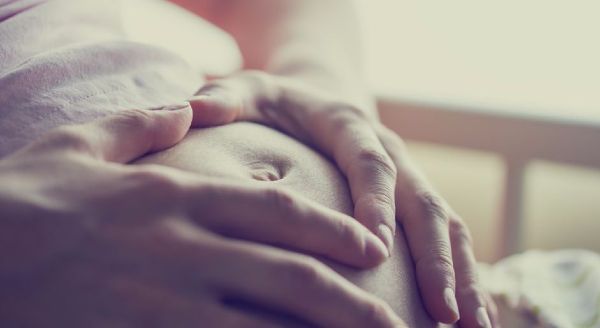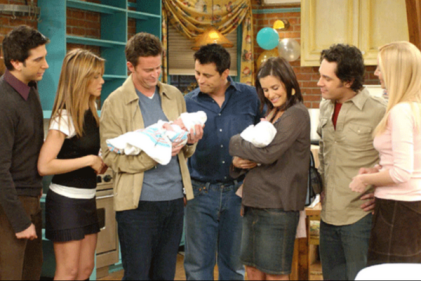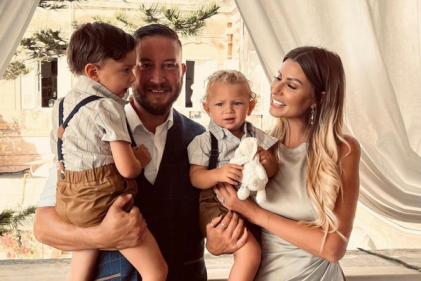As a lot of you know, my sister is a midwife. She was also my midwife, assisting my husband and I during the birth of our sons.
Her gentle touch during labour packs so much power, offering the delivering mother bursts of energy and empowerment to continue. Birthing, as you can imagine, is a topic often discussed between us accompanied by a good cuppa tea and a few biscuits. Having lived in the Netherlands for many years, my sister and I moved home to Ireland last year.
It's surprising to see the huge difference between home birth in the Netherlands and home birth in Ireland. There are many contributing factors. Some valid points, pro's and cons on both sides (home vs. hospital) but what I'm seeing is that there are a number of things that (expecting) mothers aren't aware of. To help women learn more about birthing (at home), I asked her to give me a list of ten things all midwives wish (expecting) mamas knew. Thanks to midwife, Deirdre O'Leary for the tips.
1) Do not disturb. When birth is undisturbed and the mother feels safe, the body releases hormones that help labour to progress efficiently and also releases endorphins that provide natural pain relief. This also reduces stress and increases feelings of pleasure. However, when birth is disturbed, interrupted or the mother feels unsafe; this causes fear and causes adrenaline to be produced. This increases pain levels, impedes the progression of labour and decreases blood oxygen levels, which can lead to foetal distress and a cascade of interventions.
2) You can say no. Suggestions are just that; you can always say no, and should if that’s how you feel. For example, if you would prefer not to have routine vaginal examinations or ARM (Artificial Rupture of Membranes). It’s your birth, your say.
3) Fear leads to meds. Fear often leads to the request of pain medication. It’s not just the mothers that feel fear; partners often experience it too. Pain medication leads to medical management of birth and can increase the rate of complications and interventions.
4) Birth preparation is key. Birth preparation classes are crucial to an empowering birth. It helps parents to address and release fears, get excited for the birth and feel really well prepared and confident about pregnancy and birth. I offer two pregnancy and birth preparation classes to my clients and other expectant parents, in the first and final trimester.
5) Midwifery-led care is best. Women that use midwifery-led care are less likely to have an epidural, less likely to have an episiotomy, less likely to have an instrumental delivery. They are more likely to have a spontaneous vaginal birth and more birth satisfaction.
6) Transcend pain. Pain is more manageable when well prepared e.g. with yoga, breathing techniques, hot shower, birthing pool and a positive, trusted birth companion like a midwife.
7) Write a birth plan. Write a birth plan and go through it with your midwife. It’s great to identify roles, goals, intentions and concerns. This helps the midwife to really know what you like and to help you have the most empowering birth. A good midwife knows when to be gently present, when to praise and when to carry. But just remember above all; you can do this! You’ve totally got this!! Write it down, tell yourself daily.
8) Be active. Humans weren’t made to give birth flat on their backs or with their legs in stirrups. The pelvic outlet is smaller this way and it’s literally pushing against gravity. We’re meant to move around, lean, lunge, turn, bend, squat, kneel, sit, stand, float, sway, and even dance our way through birth. Whatever we need to feel comfortable and help with the baby’s descent.
9) Consider a birth pool. The use of a birthing pool significantly reduces levels of pain, leads to a decrease in stress, decrease in length of labour, decrease in perineal trauma, increased relaxation, increased blood oxygen levels and increased feelings of satisfaction. No studies show any evidence of increases of risks or adverse effects. It is safe both to labour and to give birth in water. The baby takes its first breath only after its head is brought up above water. Whether you choose to give birth in water or on land; it’s still an excellent tool to have for pain relief during labour. Many homebirth midwives have access to a mobile birthing pool that you can use, just ask about it.
10) Give yourself the choice. The HSE home birth service is an excellent and free service, available to all healthy, low-risk women. When you apply for the service you will have your own midwife and receive personal one-on-one care and support throughout your pregnancy, during birth and for two weeks after. You can still choose at any moment, where to give birth, even during labour. You should give birth where you feel safest. Whether that’s in a hospital or at home; sometimes you only really know for sure once you have contractions. Your midwife will happily support you and stay with you throughout.
Best of luck with your pregnancy & birth!
















